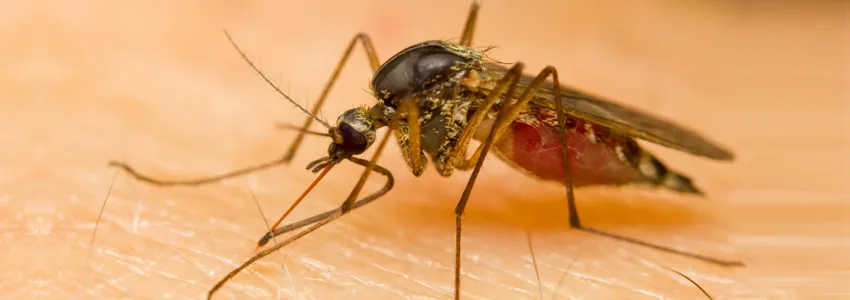
Photo by corlaffra, Shutterstock.
Stanford Medicine Scope - June 20th, 2016 - by Bruce Goldman
Much as I wholeheartedly wish death unto every extant mosquito wherever he or she may buzz, that wish is very unlikely to come true anytime in the foreseeable future. But in profiling the vulnerabilities of a few of the viral pestilences the tiny tormentors transmit, Stanford researchers have struck a blow for humanity.
All told, the primarily mosquito-borne viruses known as the Flaviviridae are one nasty bunch. That term refers to a whopping family of more than 100 species whose aggregate impact on human health is humongous. The ghoulish group includes hepatitis C virus, dengue virus, Zika virus and the aptly named yellow-fever virus, which induces jaundice in its victims.
Yellow fever — viewed in the 18th and 19th centuries as one of the most dangerous of all infectious diseases — has been relatively defanged by a safe and effective vaccine, developed in 1937. But other Flaviviridae species are still on the loose. On the order of 160 million people have chronic hepatitis C infections. There are no effective vaccines against the Zika virus. Its recent outbreak illustrates that these viruses can emerge suddenly and spread rapidly in new geographic regions.
Even for the not-so-newly-emerged dengue virus there are no approved antiviral drugs, and the recently approved vaccine is only partially effective. Dengue causes symptomatic disease in an estimated 100 million people per year worldwide.
In a study recently published in Nature, Stanford virologist Jan Carette, PhD,and his colleagues adopted an innovative approach to disabling these viruses — not by attacking them directly, but by selectively shutting down genes in the humans they infect.
“We made use of a novel genetic screening technology that allows us to inactivate each gene in our own genome individually,” Carette told me. The breakthrough technique, known as genome editing, lets scientists effectively snip out precise DNA sequences from designated locations in the genome.
Carette and his colleagues made a “library” consisting of separate cultures of human liver cells. Each cell line in the library is missing a single gene. If that cell line is surviving, its missing gene must be non-essential – to us, at least.
Next, the scientists incubated these cell cultures — each of which was composed of liver cells lacking a different non-essential gene — with the dengue virus, and looked to see in which cultures the virus could no longer thrive. Ditto for the Zika and hepatitis C viruses. He explains:
We were able to identify a distinct set of human genes that are absolutely critical for successful infection of our cells by dengue virus and hepatitis C virus. We found that the same human genes important for dengue virus were also critical for other mosquito-borne flaviviruses including Zika virus.
Targeting these genes with drugs that, say, render them temporarily dysfunctional could lead to new antiviral approaches to simultaneously combat Zika and dengue virus. It might also leave us better equipped to combat future epidemics of other newly emerging Flaviviridae.



